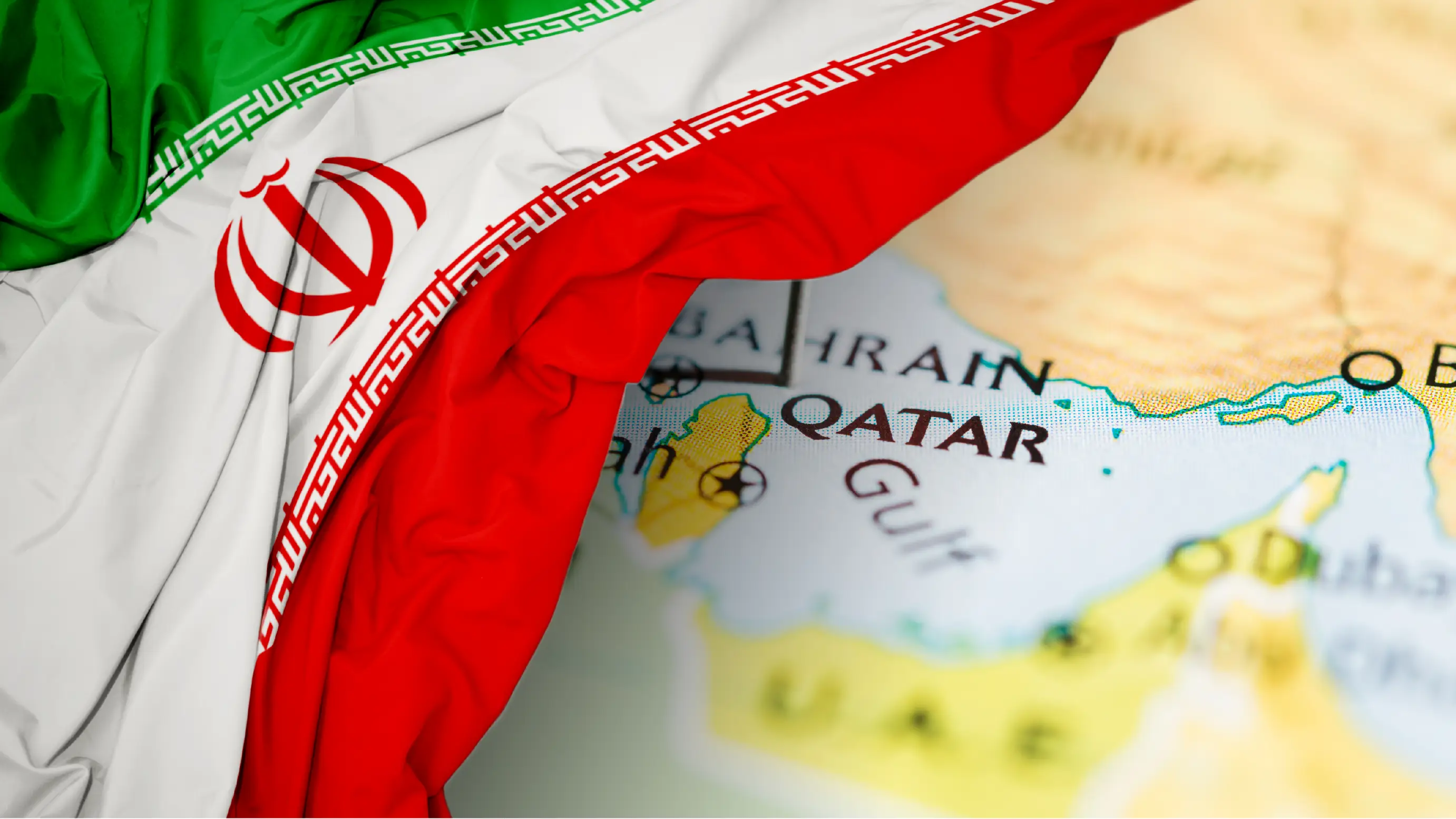IRAN RETALIATES AFTER US ATTACK. WHAT COMES NEXT?

In the hours following the US strikes on Iran’s nuclear capability as part of Operation Midnight Hammer, the Trump administration appears to be sending mixed signals on what may come next. Some within Trump’s inner circle – Vice President JD Vance, SecDef Pete Hegseth, and SecState Marco Rubio – have stated that the official US policy is not to seek regime change in Iran, and that the attacks were focused on ending Iran’s nuclear program and broader security concerns. Trump himself offered a slightly different spin when he posted on Truth Social:
“It’s not politically correct to use the term, ‘Regime Change,’ but if the current Iranian Regime is unable to MAKE IRAN GREAT AGAIN, why wouldn’t there be a Regime change???”
The Iranian government’s initial response to the US attack indicated that regime change is not coming anytime soon. Abdolrahim Mousavi, the new chief of staff of Iranian armed forces, said on Monday morning that the US violated Iran’s sovereignty when it attacked the Fordow, Natanz, and Isfahan nuclear sites on Sunday and had, “entered the war clearly and directly.” Mousavi added:
“The criminal US must know that in addition to punishing its illegitimate and aggressive offspring, the hands of Islam’s fighters within the armed forces have been freed to take any action against its interests and military and we will never back down in this regard.”
Iran Strikes Al Udeid Air Base
On Monday evening, the Iranian military quickly responded to the US attack by launching ballistic missiles at the largest and most important US military installation in the region – Al Udeid Air Base in Qatar.
Al Udeid is the host to a forward headquarters of United States Central Command, headquarters of the United States Air Forces Central Command, the Royal Air Forces No. 83 Expeditionary Air Group, and the USAF’s 379th Air Expeditionary Wing.
The base hosts more than 11,000 US and coalition forces, and over 100 operational aircraft.
Initial reports from the Qatari government Qatar’s Defense Ministry said its air defense had successfully intercepted the missile attack on Al-Udeid, and that there were no reported deaths or injuries. According to Qatari officials, Iran gave Qatar advanced warning of the missile attack enabling Qatar to close its airspace to commercial traffic before the attack ensued.
Trump later confirmed that there were no casualties on Truth Social stating, “Iran has officially responded to our Obliteration of their Nuclear Facilities with a very weak response. I am pleased to report that NO Americans were harmed, and hardly any damage was done.”
NBC News reported that US forces were braced for an imminent attack from Iran on other US military sites in Iraq and Bahrain. CNN also reported that US bases in Iraq have also come under attack by Iranian short and long range ballistic missiles.
So, what else might Iran do? Taking a look at the history of this decades-long confrontation may provide some answers.
Closing the Straits of Hormuz
On Sunday, the Iranian Parliament voted to close the Straits of Hormuz in an attempt to hurt the US economically by forcing a rise in the price of US oil imports and, subsequently, gas prices. The decision to take action to close the straits now rests with Iran’s National Security Council.
Some experts say that Iran’s closing of the straits would be a case of Iran cutting off its nose to spite its face. This move, they say, could end up hurting Iran more than it hurts its intended American target.
If Iran blocks the strait, the country risks turning its neighboring oil producing countries into enemies, and risks hostilities with them. For the moment, Saudi Arabia and the other oil-producing Arab states have been sympathetic to and spoken out in support of Iran. Closing the straits could change their position.
Furthermore, a closure would also provoke Iran’s market in Asia, particularly China, which accounts for a majority of Iranian oil exports. Iran will likely not want to antagonize China. The US has even asked China to dissuade Iran from closing the straits.
Andrew Bishop, senior partner and global head of policy research at advisory firm Signum Global Advisors, summed up his assessment by saying, “The best strategy [for Iran] would be to rattle Hormuz oil flows just enough to hurt the U.S. via moderate upward price movement, but not enough to provoke a major U.S. response against Iran’s oil production and export capacity.”
The biggest threat posed by Iran closing the Straits of Hormuz is that it sets the stage for a possible engagement between the US and Iranian Navies.
Will the US simply allow Iran to close the straits without a fight? Could an engagement happen “unintentionally?”
In recent years, Iran's Islamic Revolutionary Guard Corps (IRGC) has seized or harassed several commercial ships in the Strait of Hormuz and surrounding waters. Large scale engagements between military vessels have not occurred.
What Was Operation Martyr Soleimani?
Prior to today’s attack on Al Udeid Air Base, the largest missile attack by Iran on US forces in the region occurred on January 8, 2020 in what Iran called “Operation Martyr Soleimani.”
After the US assassinated Iranian Major General Qasem Soleimani during a diplomatic trip to Iraq on January 3, 2020, the Iranian government sought revenge.
Despite President Trump’s warnings that an Iranian military response would be answered by a US attack on 52 significant Iranian sites, the Iranians retaliated.
On January 8, 2020, the Iranian military launched 16 short range surface-to-surface missiles at US targets in Iraq.
According to a CENTCOM spokesman, 11 missiles hit Al-Asad Air Base in western Iraq, one hit a US base in Erbil. and four missed their targets.
The attack caused extensive damage to the base and 110 US service members suffered Traumatic Brain Injury from concussions due to the blasts. Fortunately, no one was killed in the attacks.
What Has Been the American Response?
In his first public comments after the Iranian attack, President Trump tweeted, "All is well!," and said that damage assessments were ongoing.
Trump sought to reduce tensions by downplaying the impact of the missile attacks, observing that Iran appeared to be "standing down," and ruled out a direct military response. Furthermore, Trump said he was willing to "embrace peace" and urged greater international cooperation in the region.
Ultimately, the US elected not to respond militarily, instead choosing to place additional economic sanctions on Iran and deploy more air defense systems to US bases in Iraq. Iran also chose to not launch follow-on attacks on US bases in the region.
Trump Announces That Israel & Iran Have Agreed to a Ceasefire
On Monday evening, Trump made an announcement, claiming that Israel and Iran have negotiated a ceasefire. According to Trump, the ceasefire is set to begin with Iran halting its attacks first, and then Israel is set to cease offensive operations in the upcoming hours.
Trump took to Truth Social to write, "CONGRATULATIONS TO EVERYONE! It has been fully agreed by and between Israel and Iran that there will be a Complete and Total CEASEFIRE."
In another post Trump said, "This is a War that could have gone on for years, and destroyed the entire Middle East, but it didn't, and never will!"
At this time, there has been no immediate official response from Iran or Israel confirming that they have agreed to ceasefire.
Earlier, it was reported that three Israeli officials had signaled that Israel was looking to stop its strikes on Iran soon, and had communicated this message on Sunday. On Sunday evening, Prime Minister Benjamin Netenyahu said that Israel was, "very, very close to completing" its goals.
This is a developing story. Check back for updates.
Suggested reads:
SHARE:
TAGS:
JOIN OUR NEWSLETTER
Get the latest news and military discounts



